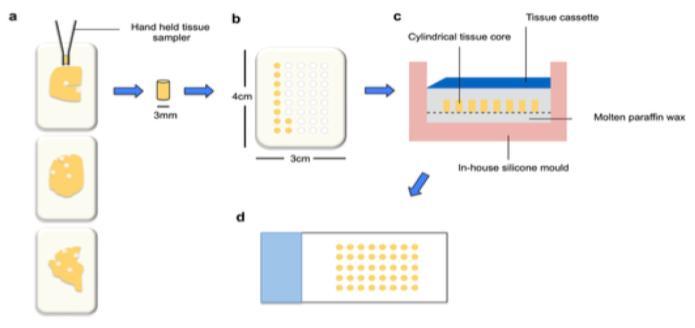High throughput tissue microarray
Tissue microarray (TMA) is a technique most commonly employed in tumour studies, involving the extraction and transfer of a large number of samples into a single block, allowing high throughput analysis. This technique has previously been adapted to investigate white matter disease in human brain tissue, highlighting its potential use in dementia research. Our laboratory has developed a protocol to analyse 15 anatomically-distinct cortical and sub-cortical brain regions on one slide. Using an automated microscope and image analysis system we have accurately quantified a number of neuropathological lesions in human post-mortem brains from the Newcastle Brain Tissue Resource. Current analysis of over 150 cases has demonstrated a large variation of pathology load in patients with severe neurodegenerative diseases, which has not been appreciated using internationally recognised semi-quantitative staging criteria. This ongoing project will provide important information that can be used in clinico-pathological studies to assess the effect of single and multiple pathologies, on cognitive status.
This project was funded by the National Institute for Health Research (NIHR) Biomedical Research Unit and the Dunhill Medical Trust.
Publications
Walker L, McAleese KE, Thomas AJ, Johnson M, Martin-Ruiz C, Parker C, Colloby SJ, Jellinger K, Attems J (2015) Neuropathologically mixed Alzheimer's and Lewy body disease: burden of pathological protein aggregates differs between clinical phenotypes. Acta Neuropathol 129:729-48.
Attems J, Neltner JH, Nelson PT (2014) Quantitative neuropathological assessment to investigate cerebral multi-morbidity. Alzheimer Res Ther 6(9):85.
